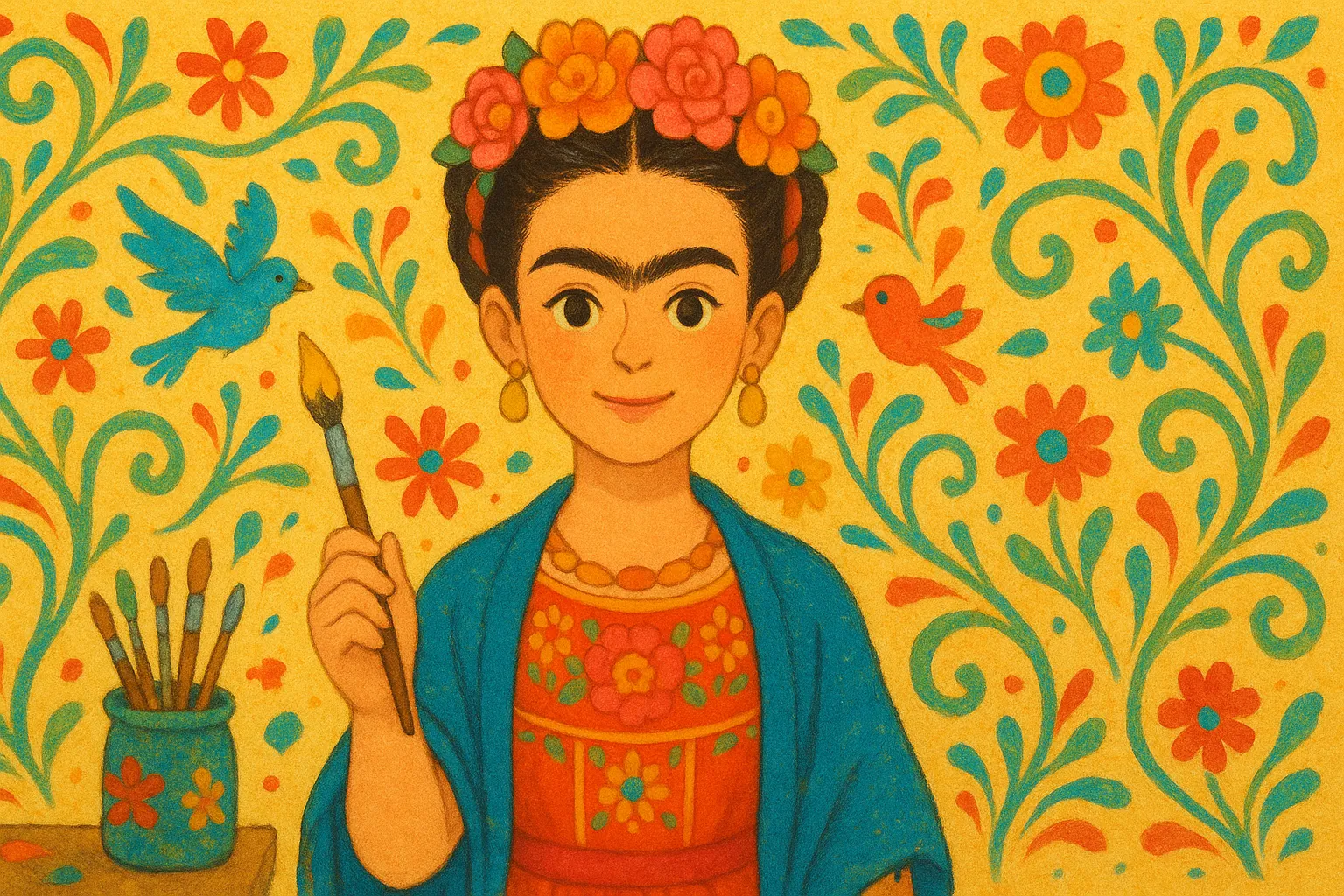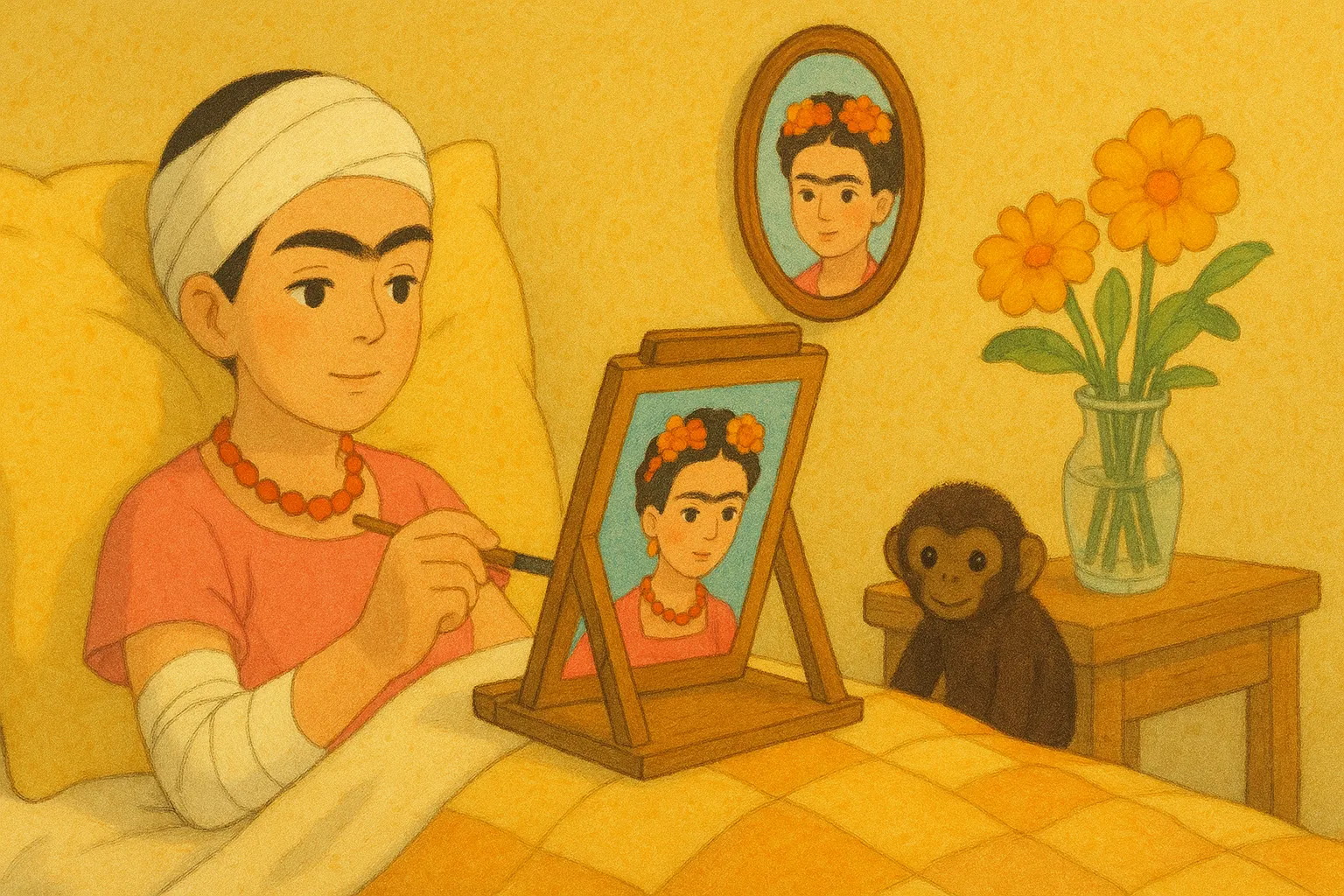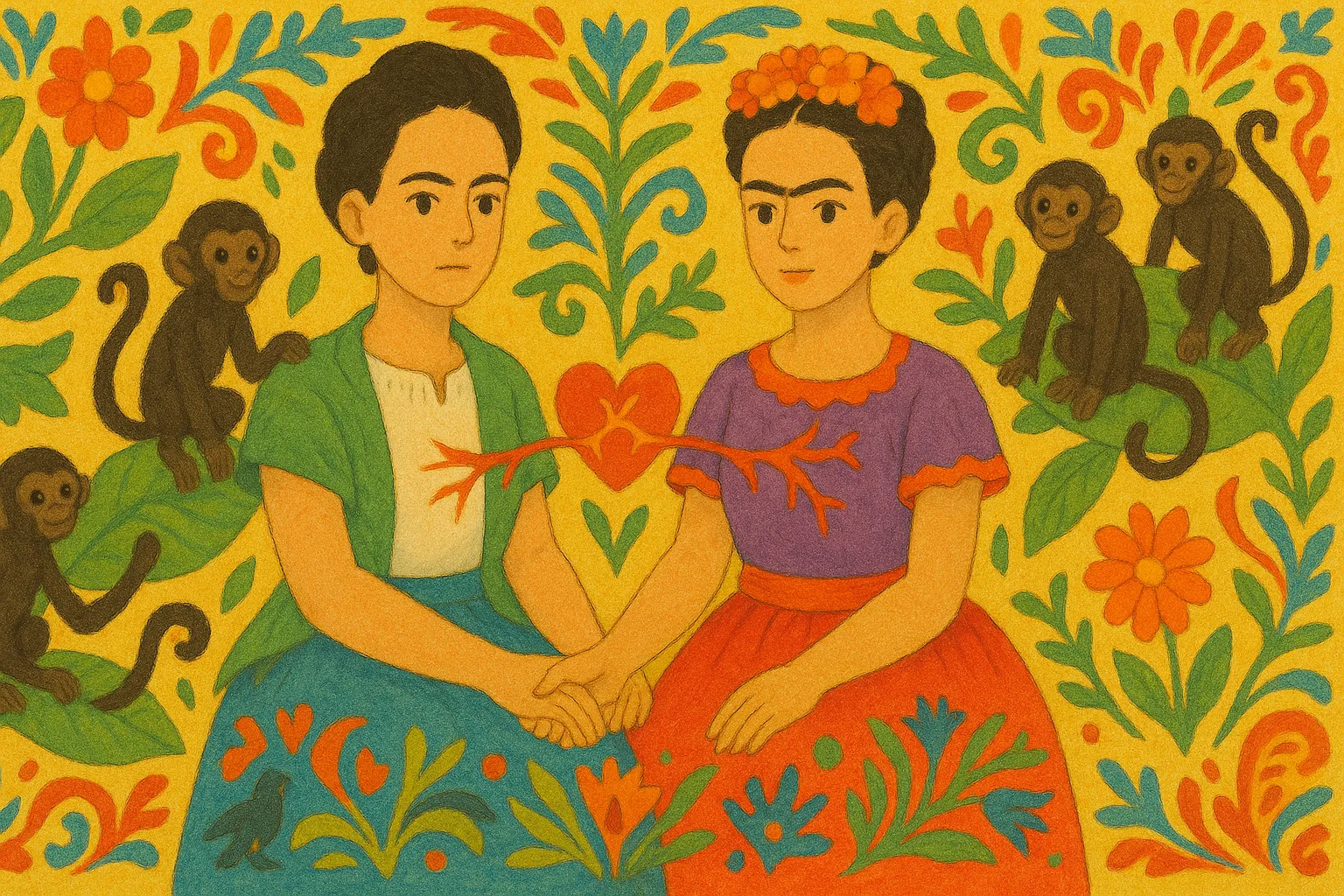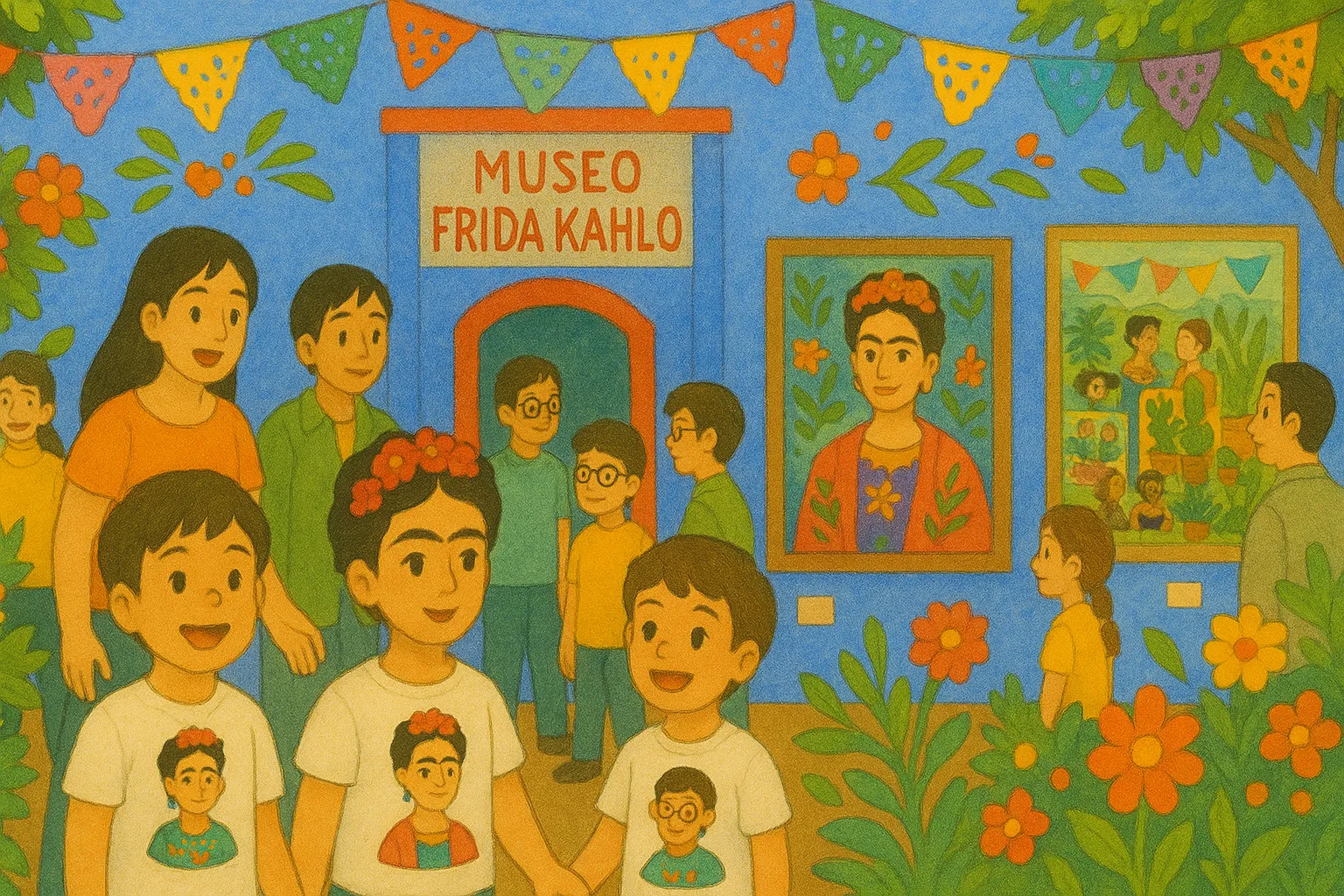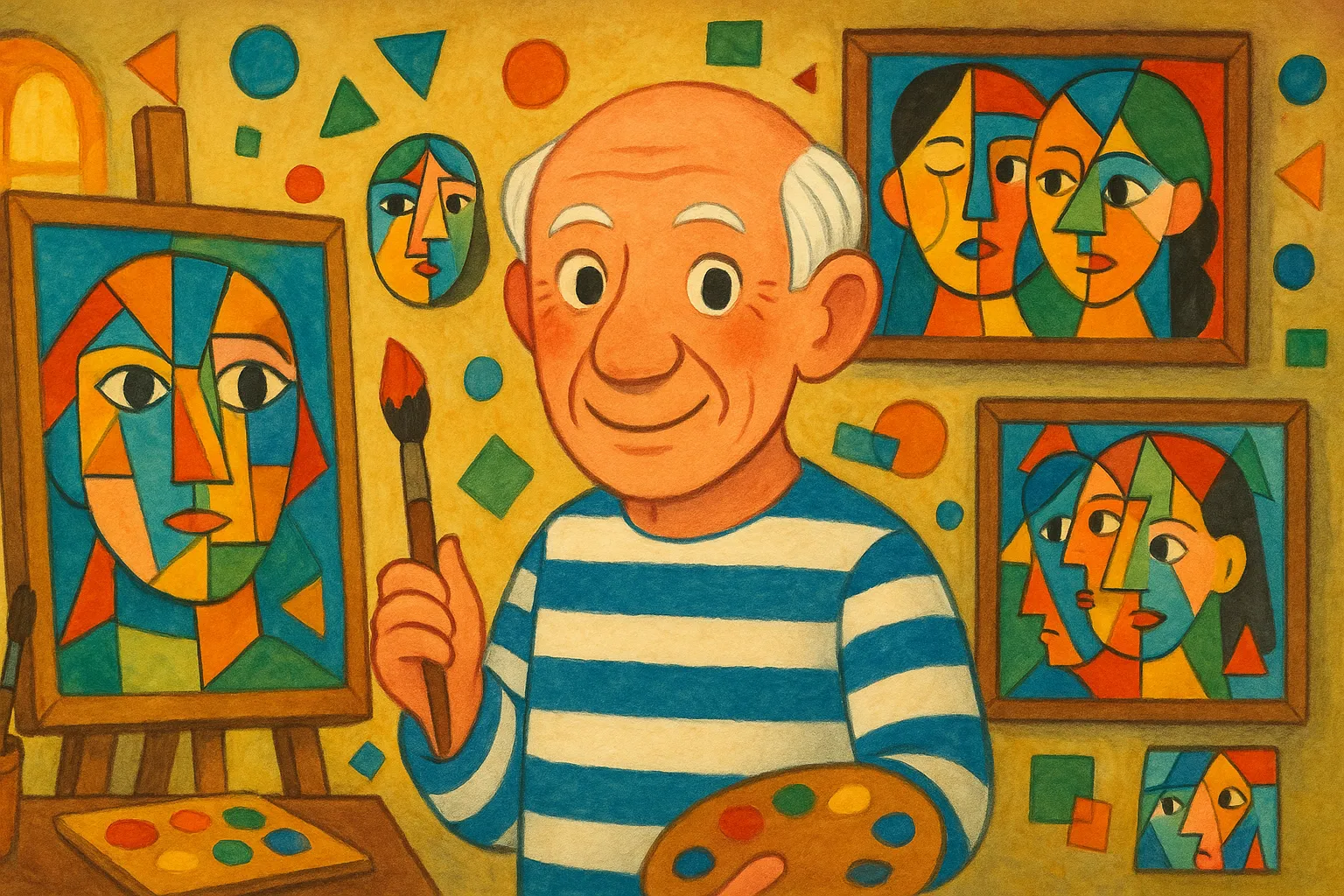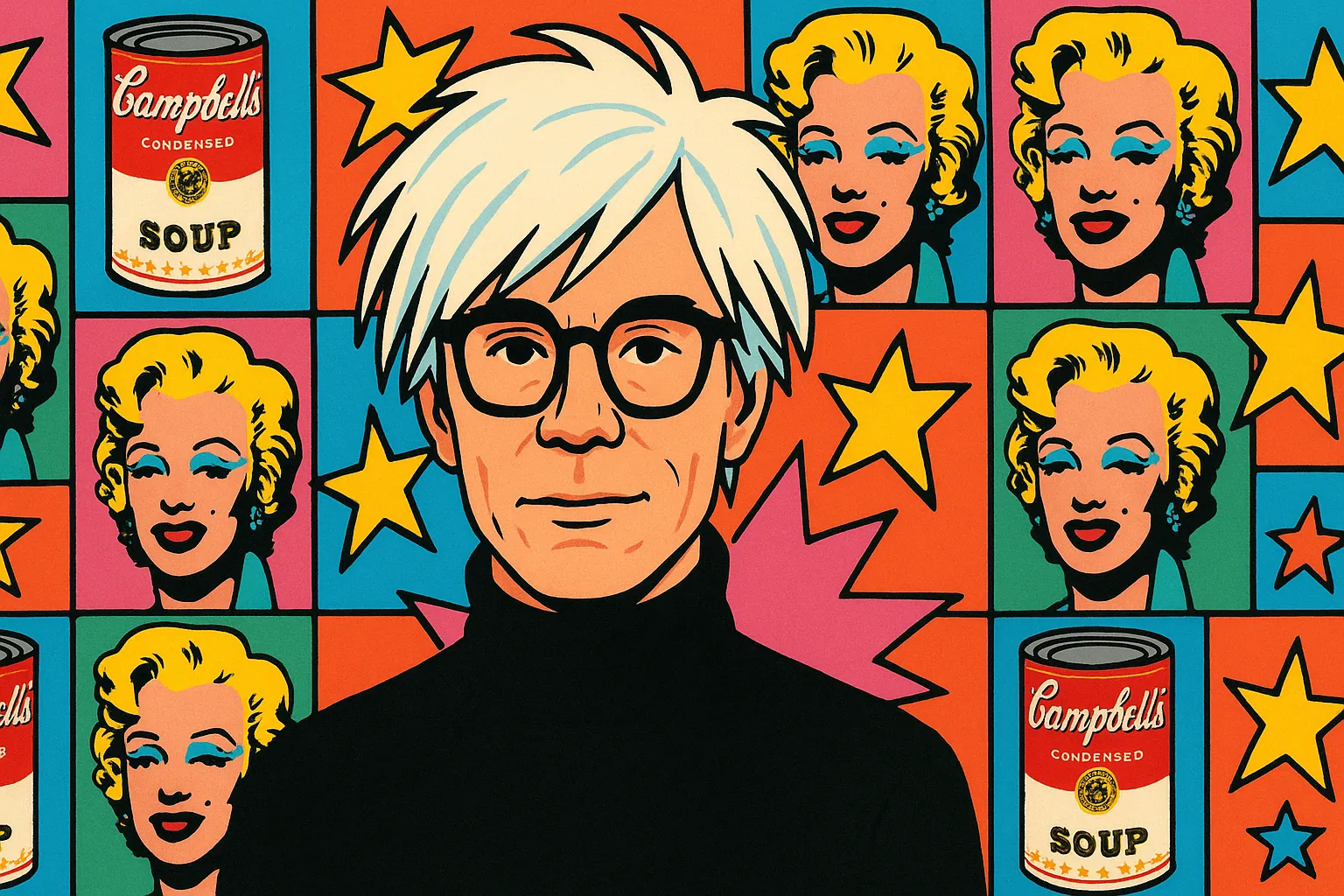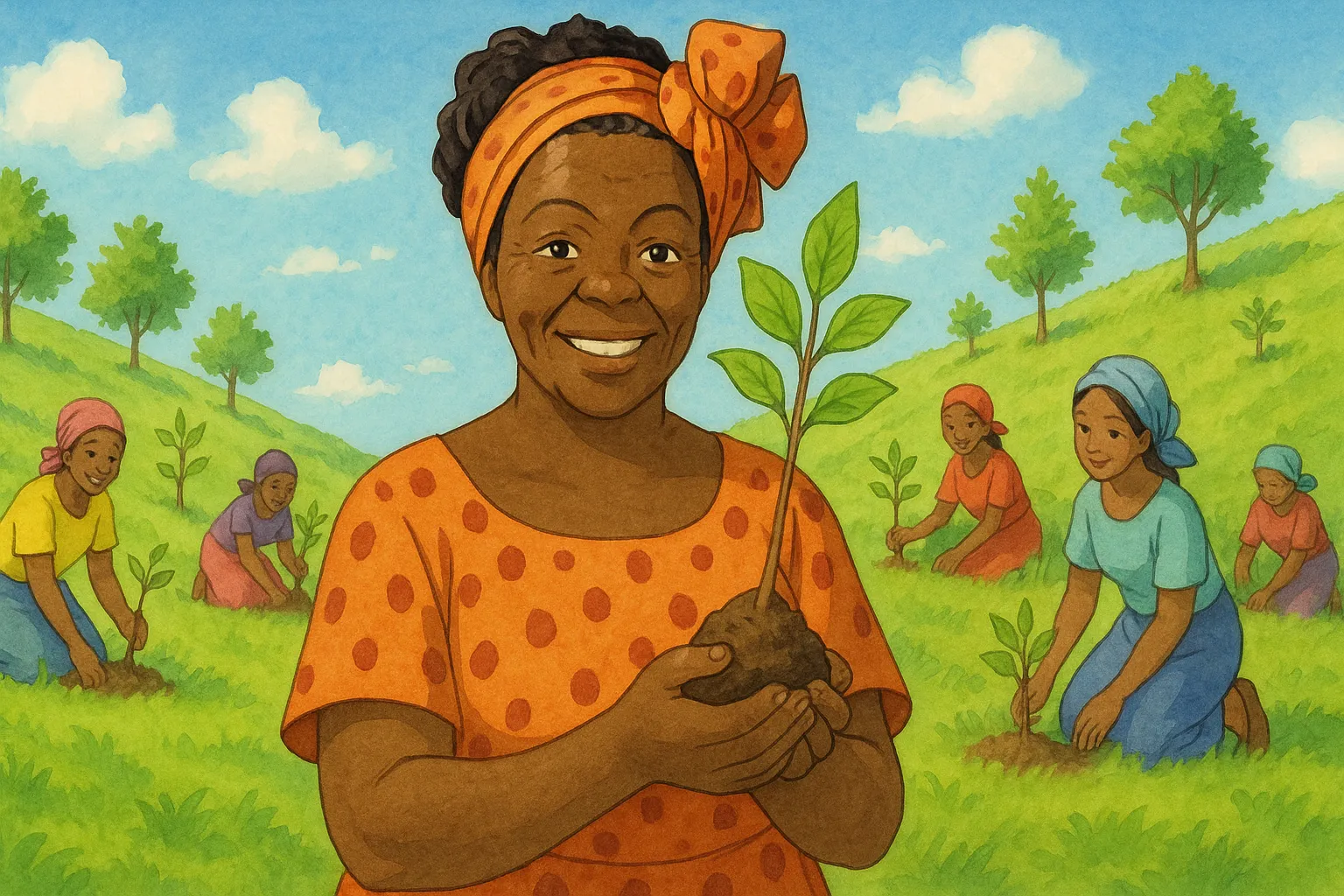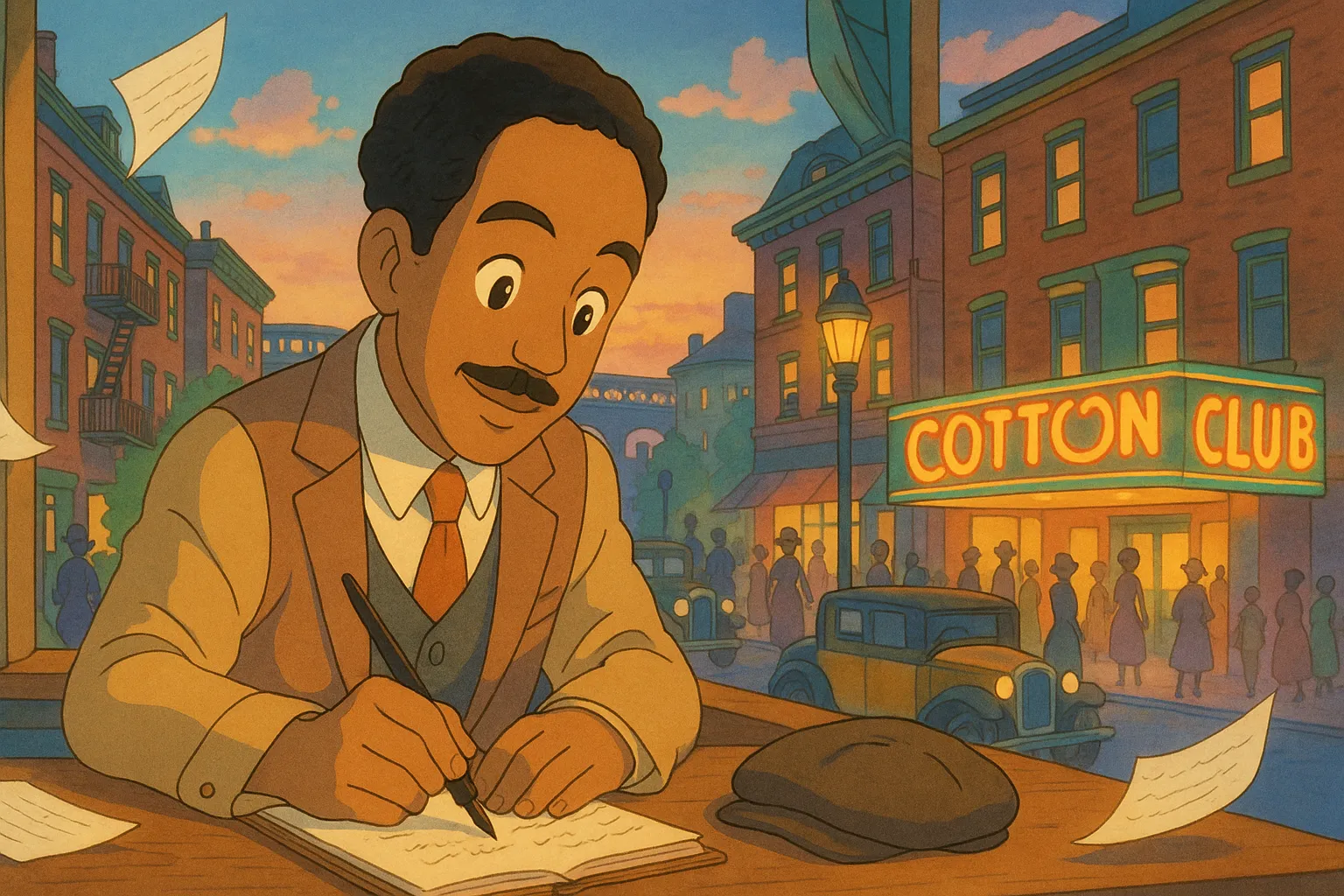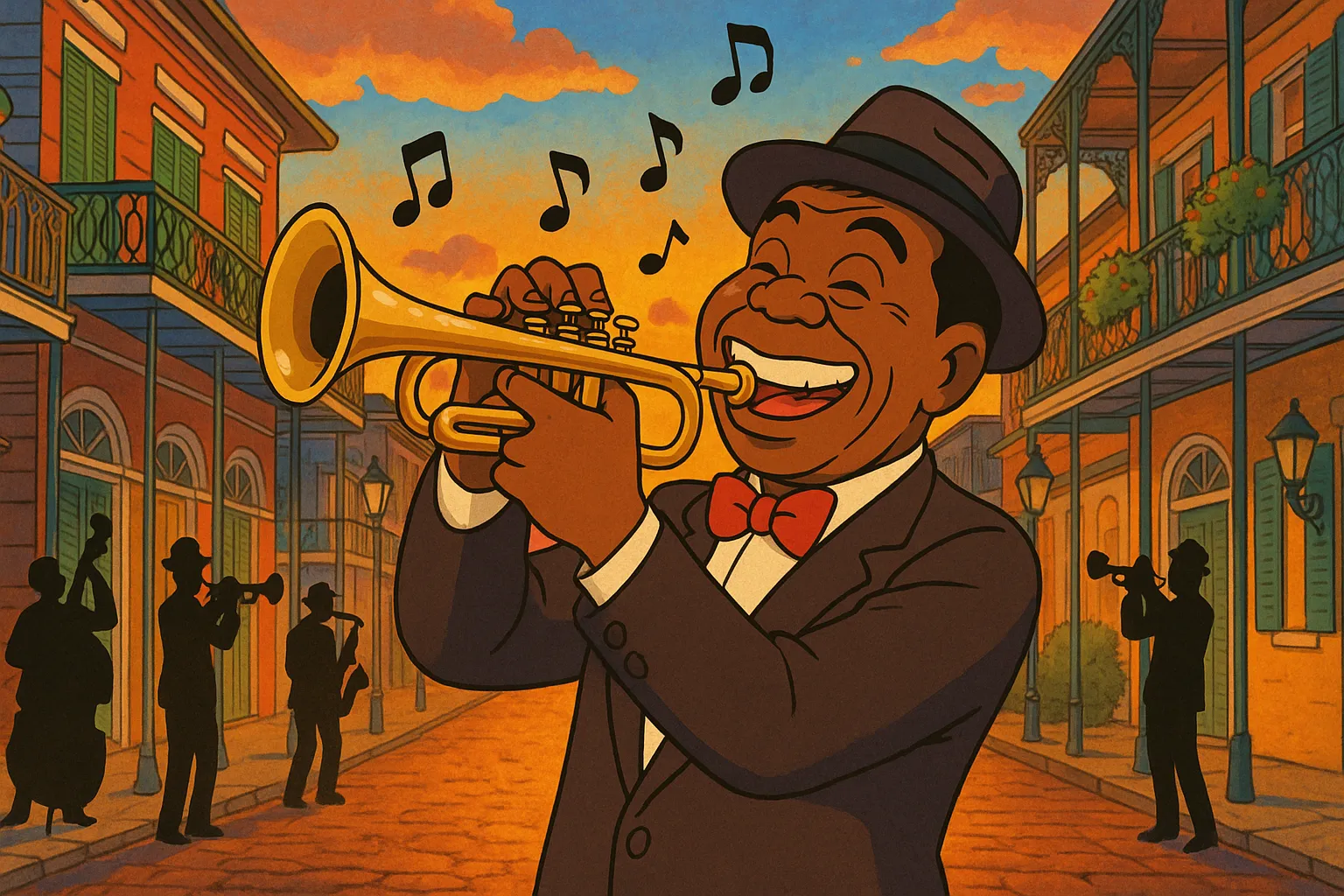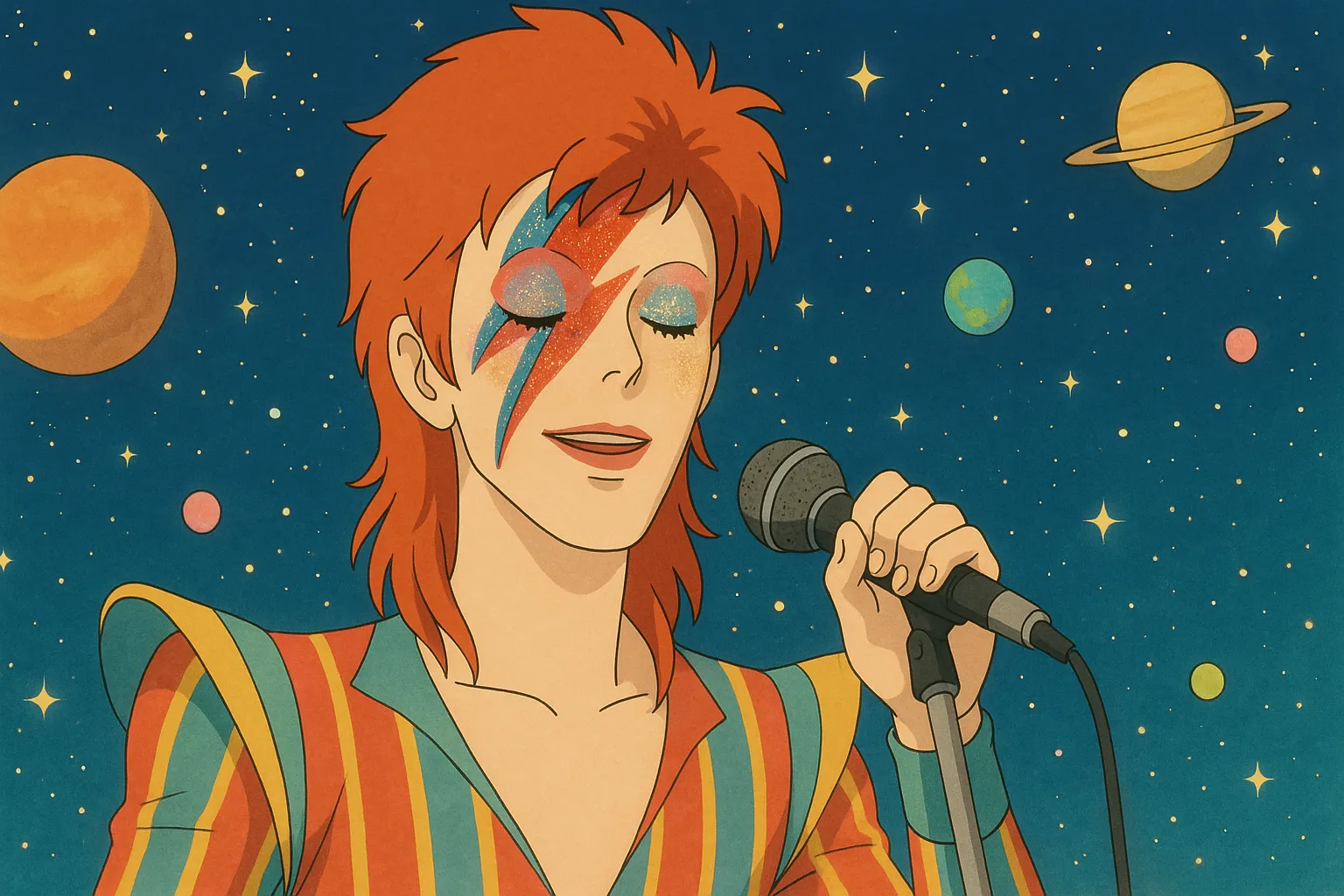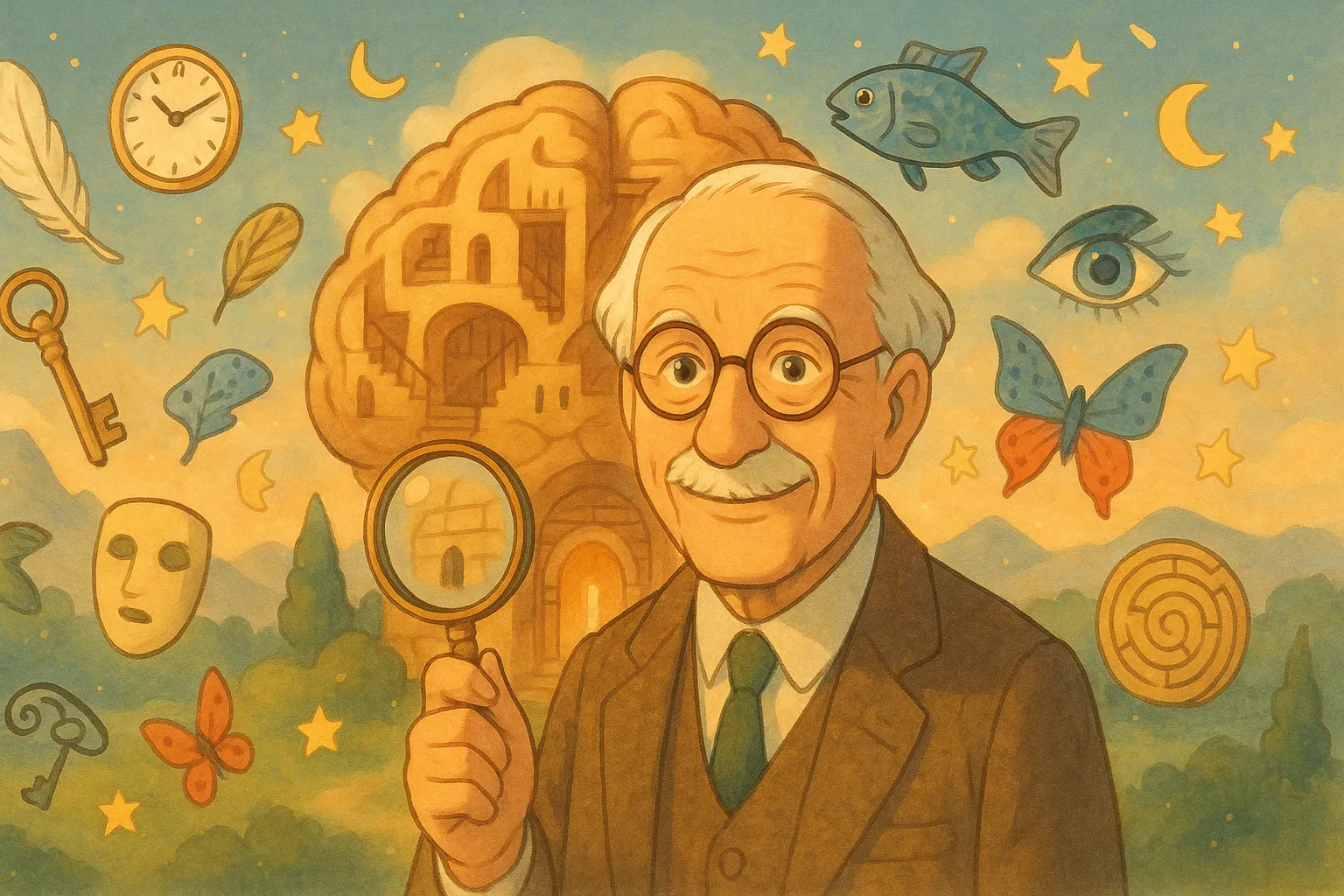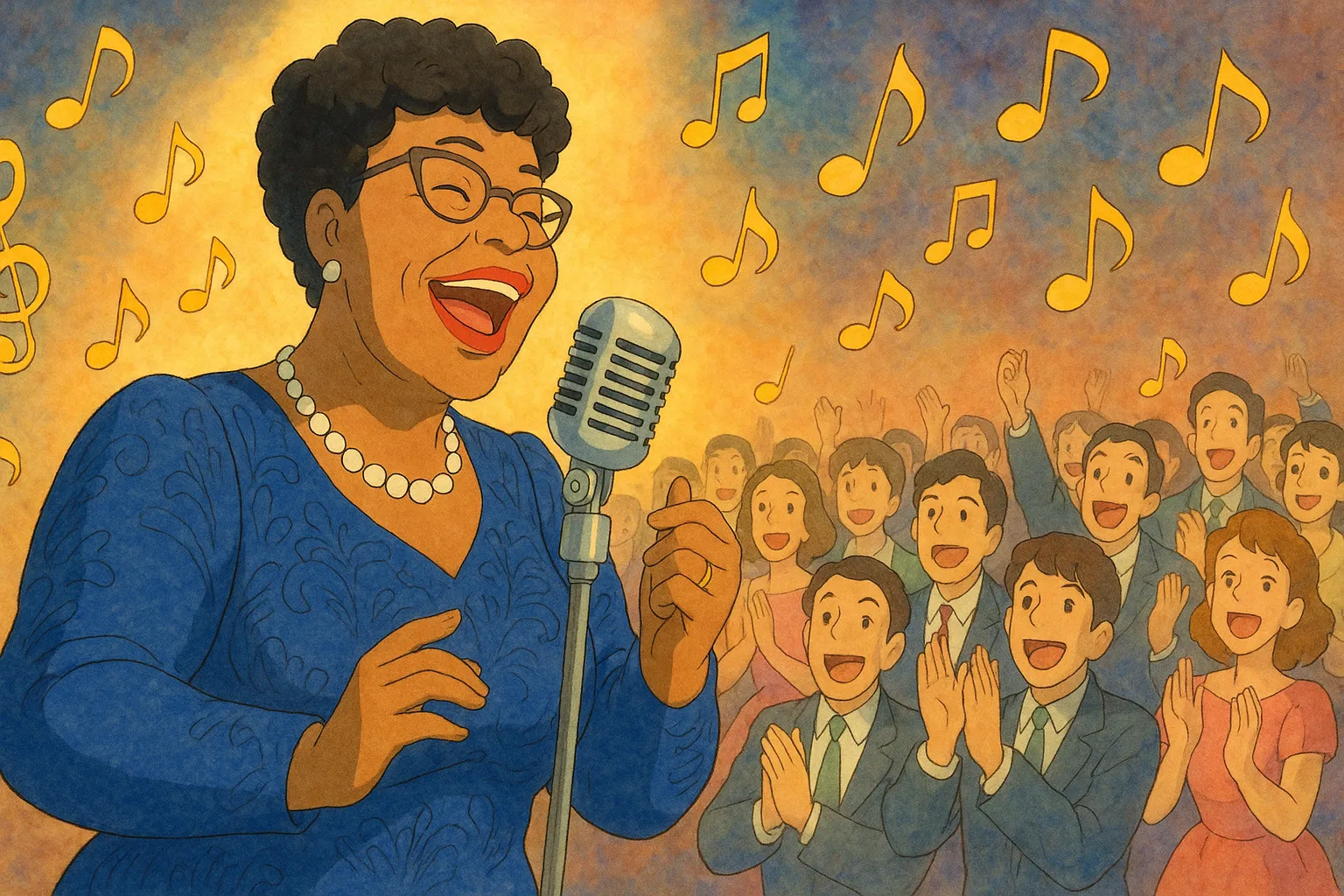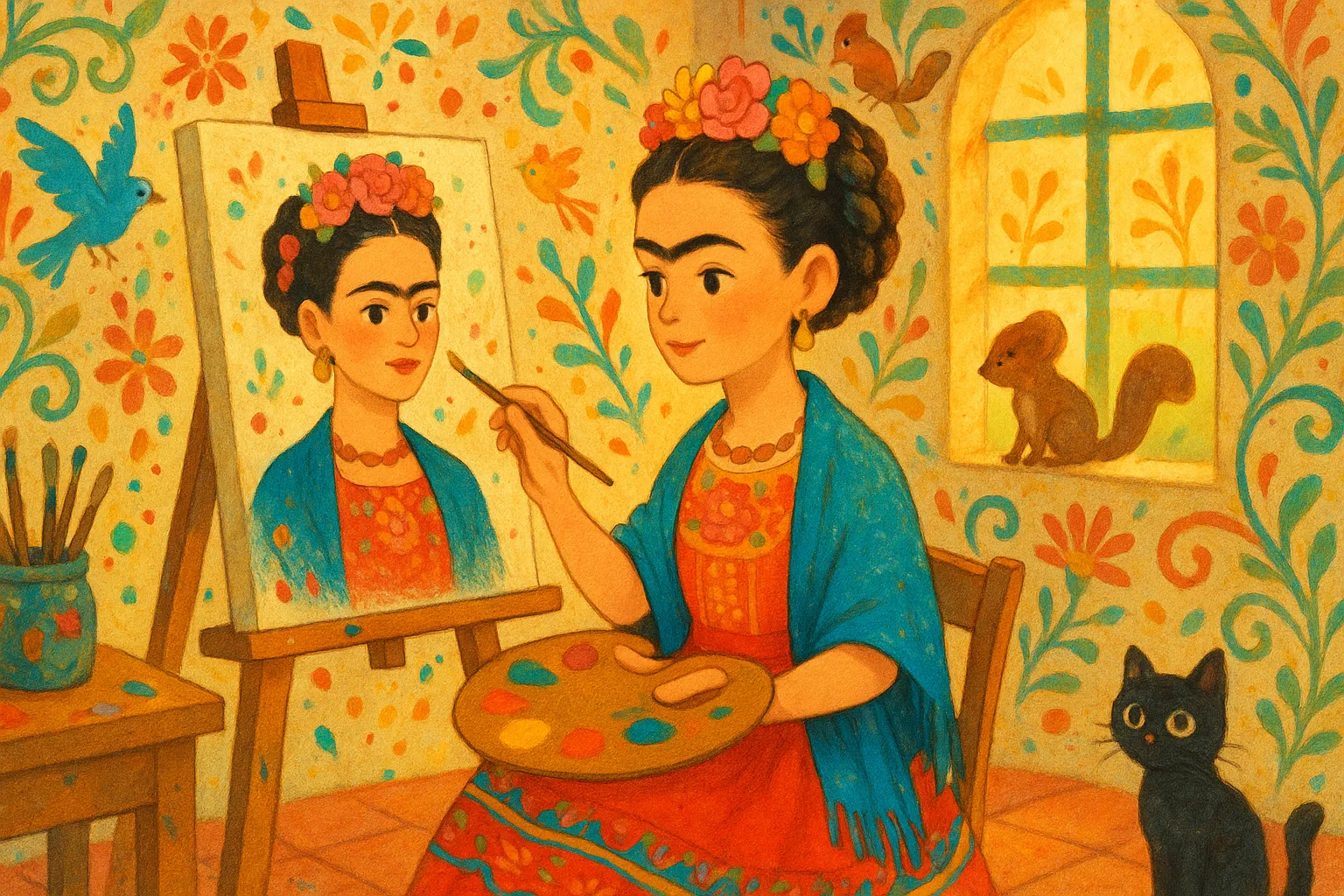
Frequently Asked Questions
What was Frida Kahlo’s full name?
Her full name was Magdalena Carmen Frida Kahlo y Calderón.
Was Frida Kahlo married?
Yes. She married fellow artist Diego Rivera in 1929, divorced in 1939, and they remarried in 1940.
Did she have health problems besides the bus crash?
Yes. As a child she had polio, which weakened one leg, and later endured many surgeries and chronic pain from her injuries.
How did she keep painting while ill or immobile?
She adapted by using custom easels and supports and painted on canvas, wood, and metal so she could work even during long periods of limited mobility.
Was Frida Kahlo a Surrealist artist?
Some Surrealists admired her work—André Breton called her a Surrealist—but Frida insisted she painted her own reality, not dreams.
Was she involved in politics?
Yes. Frida and Diego were politically active, had ties to the Mexican Communist Party, and their home hosted exiles like Leon Trotsky.
When did Frida Kahlo die?
She died in 1954 in Coyoacán, Mexico, after years of health struggles.
What language did she speak?
Spanish was her primary language; she also learned some English during travels and exhibitions abroad.
Is Frida Kahlo a feminist icon?
Yes. Many people view her as a feminist and queer icon because her art openly explored female experience, identity, and bodily pain.
Did Frida influence fashion and style?
Yes. Her traditional Tehuana dresses, bold jewelry, and painted-on brows became signature elements that inspired fashion and Mexican cultural pride.
